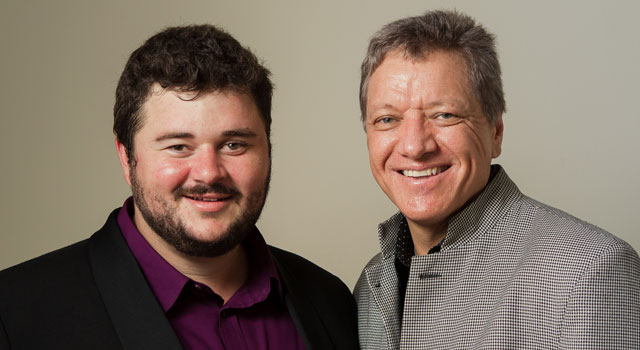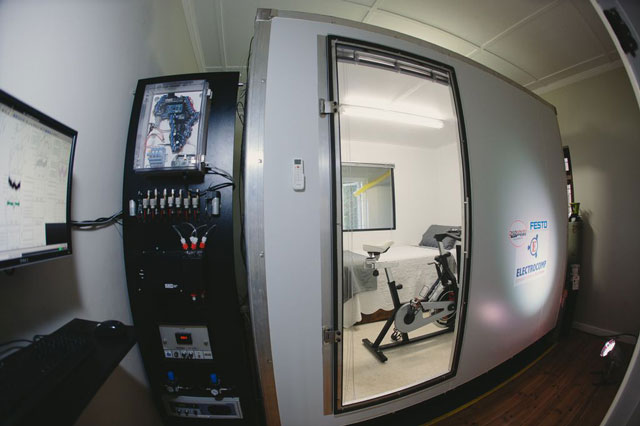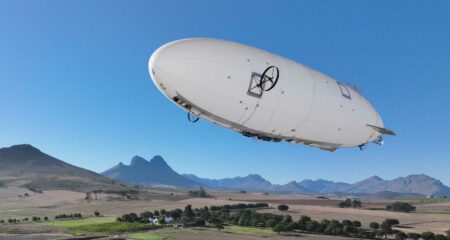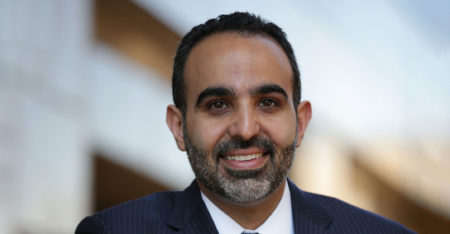
In an ordinary-looking house at 18 Dennesig Street in Stellenbosch in the Western Cape, a company called HealthQ Technologies has built a “metabolic chamber” — a device used for recording oxygen consumption and carbon-dioxide production for measuring human metabolic activity — using open-source principles.
The company plans to make much of the data from its research available for other researchers, or anyone else who wants to use it.
The chamber will be used in the testing and development of health and fitness products and medicines. The team behind HealthQ includes engineers, computational systems biologists, mathematicians and biochemists and the company hopes to encourage interest in a multitude of fields.
Two of the project’s backers are US investor Thomas Kaplan and 4Di Capital, the venture capital fund that recently received investment from E Oppenheimer & Son. HealthQ isn’t saying how much investment it has received.
Rachel Slack, a member of the Oppenheimer family, is one of the four board members. Others on the board are venture capitalist Justin Stanford, computational systems biologist Riaan Conradie (who is also HealthQ’s CEO), biologist Franco du Preez and US venture capitalist and lead founding funder Laurence Olivier (who serves as chairman).
Olivier, who is also a partner at 4Di, says the HealthQ facility, which was launched officially on Tuesday, is one about of about 20 metabolic chambers around the world. However, he says none has been built as cost-effectively and the data generated by the others is seldom shared publicly.
A metabolic chamber measures oxygen consumption and carbon-dioxide production over time and, from this information, it’s possible to calculate the “respiratory quotient”, a ratio that explains not just the quantity of energy someone is burning but also whether it’s fat, carbohydrates or proteins.
“A metabolic chamber is a lens to look into a person’s body,” explains Conradie. “It allows us to look at the metabolism itself. Data streams will be collected from the chamber and a big part of the project is the mathematical modelling that will be used to analyse this data.”

Ultimately, research from projects like this should lead to the development of personalised medicine that is “tailor-made for the individual”, according to Conradie.
Olivier says that many devices on the market today, like the popular Nike+ Fuelband, use measures of activity such as heartbeat, temperature and movement to “guesstimate calories burned” but equipment like the metabolic chamber and the mathematical models they employ are far more accurate.
“There are three big trends we’re seeing in everything now: the mobile revolution, the social revolution, and the big-data revolution. The first part of this hasn’t been integrated into analytical means of measuring activity in the human body,” Olivier says. “We’re talking about offering a direct look, almost at a cellular level, at the body and what happens in it.”
Conradie says HealthQ’s first set of tests will involve a group of 20 people, considering their diet and putting them through a range of random physical activities. The company hopes to expand this to 100 people for its next round of tests.
HealthQ wants to assist in both academic research and help private companies looking to test drugs and other products. There is also an opportunity to test — and possibly debunk — claims made by medical products, particularly those that claim to boost metabolism for weight loss.
Another feature that sets HealthQ’s metabolic chamber apart from other metabolic chambers is it was built with off-the-shelf components. “It’s powered by a Raspberry Pi computer running Linux,” says Conradie. “It uses Python and a graphing tool called Cosm, which we will use to make a feed of preliminary data available online.”
Conradie says HealthQ has taken an open-source approach to the hardware and software and, in addition to offering the source code freely online, it will also make the schematics for the chamber available to the public.
Thanks to contributions by local companies the chamber has also been built for a fraction of the cost normally required to build equipment of this nature. “You’re looking at between US$1m and $2m to build a chamber like this. The flow sensor we’re using — which measures the mass of gas passing through a tube — was found in an automotive part. It’s prohibitively expensive if you’re buying a medical one.”
HealthQ’s chamber cost about R200 000 to build, thanks to sponsors like panel manufacturer SPM which built the physical chamber free of charge and Beta-Layout, which produced the necessary circuit boards, also at no charge. Other companies that offered their assistance included Electrocomp, Sensirion and Scales Inc, and it was their assistance, in part, that motivated HealthQ to make its data available for free.
Olivier says this approach has also meant HealthQ has “spent its investors’ dollar wisely” and made it an excellent example of an “entrepreneurial can-do attitude”. He says the field of digital medicine is in its infancy and that there are potential uses for the metabolic chamber that the company itself hasn’t even considered yet. — (c) 2012 NewsCentral Media




